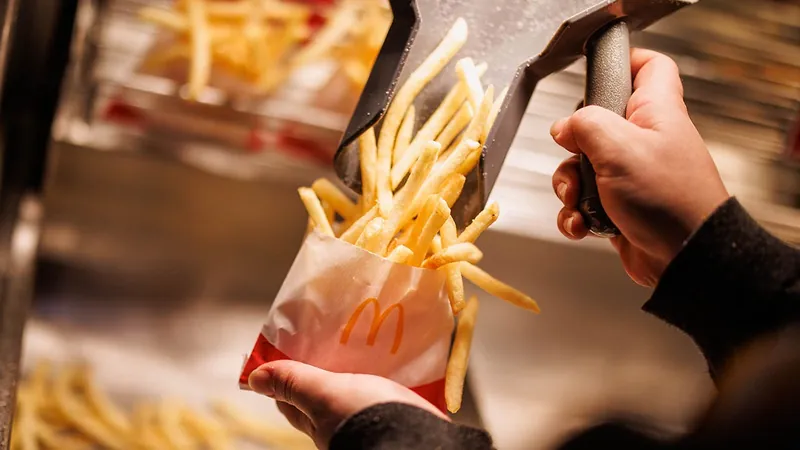
Major French Fry Supplier Shuts Down Plant and Cuts Jobs Amid Ongoing Inflation Crisis
2024-10-08
Author: Jessica Wong
Major Closure and Job Losses
In a significant blow to the fast-food industry, Lamb Weston, North America’s leading french fry producer, has announced the closure of its plant in Connell, Washington. This closure will unfortunately lead to the loss of 375 jobs, accounting for approximately 4% of the company’s workforce. This decision comes as consumers continue to tighten their budgets amid soaring prices at fast-food establishments.
Company Insights and Challenges
Tom Werner, president and CEO of Lamb Weston, shared insights during an earnings call last week, noting that retail traffic and demand for frozen potatoes are still underwhelming. “We expect these trends to persist through the end of fiscal 2025,” he remarked, highlighting the challenges the company faces in meeting market demands.
Strategic Measures for Improvement
To address the supply-demand imbalance across North America, Lamb Weston is implementing several strategic measures, including reducing operational costs and workforce, along with cutting back on capital expenditures. Werner has emphasized that these adjustments are essential for better factory utilization rates and overall cost savings.
No Disruption in Supply
Despite the plant closure, the company reassured partners that there will be no disruption in supply. This announcement comes at a time when fast-food chains are navigating tough economic waters, with many Americans now viewing fast food as a luxury due to increased prices. A recent survey indicated that a staggering 80% of consumers consider their regular fast-food meals a treat rather than an everyday expense.
Fast-Food Chains' Response to Economic Pressures
In response, chains like McDonald’s, Burger King, and Wendy's have begun rolling out attractive meal deals to lure customers back in. McDonald's, for example, has introduced a $5 Meal Deal that features a choice of a McDouble or McChicken, alongside chicken nuggets, fries, and a small drink. However, despite these promotions, the demand for fries remains disappointing. Werner noted that many customers are downsizing their orders—from medium to small fries—in order to save money.
Wider Impacts on the Fast-Food Sector
The struggling fast-food sector reflects broader economic pressures, as overall restaurant traffic in the U.S. has dipped by 2% in the last quarter, following a 3% decline the quarter before. As inflation continues to squeeze wallets, companies will have to get creative in their marketing strategies to keep customers coming through the doors.
Looking Ahead
Stay tuned for more updates on how the fast-food market will adapt to these ever-changing economic challenges!


 Brasil (PT)
Brasil (PT)
 Canada (EN)
Canada (EN)
 Chile (ES)
Chile (ES)
 España (ES)
España (ES)
 France (FR)
France (FR)
 Hong Kong (EN)
Hong Kong (EN)
 Italia (IT)
Italia (IT)
 日本 (JA)
日本 (JA)
 Magyarország (HU)
Magyarország (HU)
 Norge (NO)
Norge (NO)
 Polska (PL)
Polska (PL)
 Schweiz (DE)
Schweiz (DE)
 Singapore (EN)
Singapore (EN)
 Sverige (SV)
Sverige (SV)
 Suomi (FI)
Suomi (FI)
 Türkiye (TR)
Türkiye (TR)